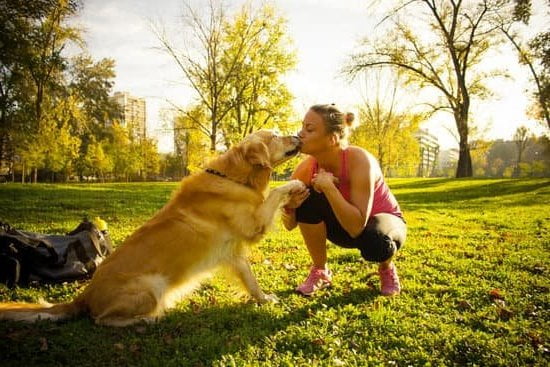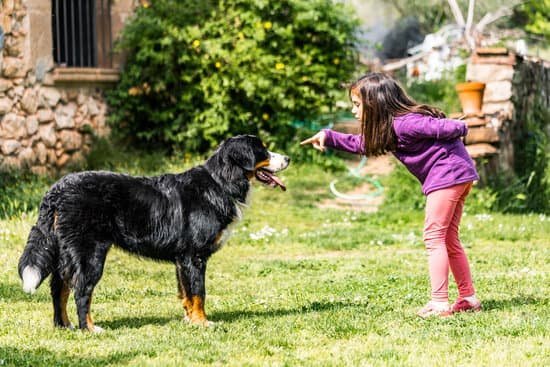Training a dog on a schedule is an essential aspect of successful dog training. Having a well-structured schedule not only helps establish routines and boundaries for your furry friend but also provides them with the consistency they need to learn and develop good behavior. In this article, we will explore the importance of training a dog on a schedule and the various benefits it brings.
A well-structured schedule plays a vital role in successful dog training. Dogs are creatures of habit, and having a consistent routine helps them understand what is expected of them at certain times. By setting clear expectations through regular training sessions, you provide your dog with structure and guidance, which promotes discipline and proper behavior. Training on a schedule also allows you to allocate dedicated time for specific commands or behaviors you want your dog to learn or improve upon.
Training a dog on a schedule offers numerous benefits for both you and your furry companion. Firstly, it enhances communication between you and your dog, building trust and strengthening your bond. When training becomes part of their daily routine, dogs become more attentive and responsive to commands, making the overall process smoother. Additionally, establishing consistency through regular training sessions helps prevent behavioral issues such as aggression or excessive barking.
In the following sections, we will delve deeper into understanding the basics of dog training, creating an effective daily routine for training sessions, applying positive reinforcement techniques consistently, breaking down each training session step-by-step, incorporating variety in exercises to keep your dog engaged, measuring progress accurately, overcoming challenges faced during training, and maintaining long-term success through consistency. Stay tuned to uncover how these techniques can help create a well-behaved and happy four-legged friend.
Understanding the Basics
When it comes to training your dog on a schedule, it is essential to have clear training goals in mind. These goals will not only help you stay focused during training sessions but also provide a sense of direction and achievement for both you and your dog. Here are some steps to help you establish clear training goals:
- Identify specific behaviors or commands to focus on during training: Before starting any training session, identify the specific behaviors or commands you want your dog to learn or improve upon. This could include commands like sit, stay, come, or behaviors such as walking on a leash without pulling. By breaking down your overall goal into smaller, specific targets, it becomes easier to track progress and ensure that your dog is learning effectively.
- Set realistic expectations for your dog’s progress: It’s important to have realistic expectations when setting training goals for your dog. Keep in mind that each dog learns at their own pace and what works for one might not work for another. Consider factors such as breed, age, and previous training experience when establishing goals. Remember that patience and consistency are key ingredients in successful training.
- Break down larger goals into smaller achievable steps: Breaking down larger training goals into smaller achievable steps can make the process less overwhelming for both you and your dog. For example, if you want to teach your dog to stay, start by practicing short stays gradually building up the duration over time. Celebrate each small success along the way which will motivate your dog to continue learning.
By understanding the basics of establishing clear training goals, you can set yourself up for success when training your dog on a schedule. Identifying specific behaviors or commands, setting realistic expectations, and breaking down larger goals into manageable steps will allow for effective and productive training sessions with your furry friend.
- Identify specific behaviors or commands to focus on during training.
- Set realistic expectations for your dogs progress.
- Break down larger goals into smaller achievable steps.
Creating a Consistent Daily Routine for Training Sessions
One of the key factors in successful dog training is establishing a consistent daily routine for training sessions. Dogs thrive on structure and routine, so having a set schedule can greatly enhance their learning process. By creating a consistent daily routine, you provide your dog with clear expectations and develop a sense of reliability and trust between you and your furry friend.
The first step in creating a consistent daily routine is selecting the optimal time of day for training. Choose a time when your dog is most alert and receptive to learning. This may vary depending on your dog’s age, breed, and individual characteristics. For example, puppies may have short bursts of energy in the morning and evening, while adult dogs may be more focused during quiet times during the day.
In addition to selecting the right time, it is crucial to allocate a dedicated training space free from distractions. This space could be indoors or outdoors, as long as it provides enough room for both you and your dog to move comfortably.
Remove any potential distractions such as toys or other pets that could divert your dog’s attention away from the training session. Creating a calm and focused environment will help your dog stay engaged and make the most out of each training session.
By implementing a consistent daily routine for training sessions, you set yourself up for success in teaching your dog new behaviors and commands. The next section will discuss effective techniques such as positive reinforcement and consistency that will further enhance the effectiveness of your training sessions.
Effective Training Techniques
The power of positive reinforcement in dog training
Positive reinforcement is a highly effective training technique that can help to shape and reinforce desired behaviors in dogs. This technique involves rewarding your dog with treats, praise, or other forms of positive reinforcement when they perform the desired behavior. By associating the behavior with a positive outcome, such as a treat, your dog is more likely to repeat that behavior in the future.
When using positive reinforcement, it is important to provide the reward immediately after the desired behavior occurs. This helps your dog make a clear connection between their actions and the reward. For example, if you are teaching your dog to sit on command, you would give them a treat as soon as their bottom touches the ground after hearing the command.
In addition to treats, there are other forms of rewards that can be used for positive reinforcement. These include verbal praise, petting or stroking, playtime with toys, and even access to favorite activities or privileges that your dog enjoys. It’s important to find what motivates your dog and use it as a reward during training sessions.
Consistency as a key element in achieving desired results
Consistency is another crucial aspect of effective dog training. Dogs thrive on routine and predictability, so maintaining consistent expectations and consequences will help them understand what behaviors are desirable and which ones are not.
Consistency involves using the same commands for specific behaviors and always enforcing appropriate responses from your dog. For example, if you use the command “sit” for your dog to sit down, always use that same command instead of alternate variations like “sit down” or “take a seat.” This will prevent confusion for your dog and make it easier for them to associate the command with the desired action.
It’s also important to establish consistent rules and boundaries throughout all aspects of your dog’s life. For example, if you don’t want your dog to jump on the furniture, be sure to enforce that rule consistently and not allow them on the furniture at any time. Consistency across different situations and environments will help your dog generalize their training and understand that certain behaviors are always expected.
By using positive reinforcement and maintaining consistency in your training approach, you can effectively teach your dog new behaviors and reinforce good manners. The combination of these techniques creates a clear and structured learning environment for your dog, increasing the likelihood of successful training outcomes.
Breaking Down Your Training Sessions
Breaking down your training sessions into a step-by-step approach is essential for effectively teaching your dog new behaviors and commands. This section will provide guidance on how to prepare for training, start with basic commands, and gradually advance to more complex tasks.
Pre-training preparations
Before beginning a training session, it is important to gather all the necessary treats or toys that will be used as rewards. These rewards should be highly motivating for your dog and easy to dispense during the training process. Having these items readily available will help keep the training session flowing smoothly and minimize distractions.
Starting with basic commands
When starting a training session, it is best to begin with basic commands that your dog is already familiar with. These can include commands such as sit, stay, come, or lie down. By revisiting these commands at the start of each session, you are reinforcing your dog’s understanding and ensuring they maintain strong foundational skills.
As you progress through the session, gradually introduce new commands or behaviors that you want your dog to learn. Start by breaking down the new behavior into smaller steps and rewarding your dog for successfully completing each step. This incremental approach allows your dog to understand and build upon each component of the desired behavior before putting them all together.
Advancing to more complex tasks
Once your dog has mastered basic commands, it is time to advance to more complex tasks. This could involve teaching tricks like roll over or fetch or working on more advanced obedience skills such as off-leash walking or targeting specific objects.
When introducing new tasks, be patient and take it slow. Break down each task into achievable steps just as you did with the basic commands. As your dog becomes more proficient in performing these complex tasks, gradually increase the difficulty level by adding distractions or increasing distance or duration.
By following this step-by-step approach in your training sessions, you provide clear direction and structure for your dog, making the learning process more manageable and enjoyable. Remember to always be patient and supportive, rewarding your dog’s progress along the way.
Incorporating Variety
Training a dog on a schedule doesn’t have to be monotonous or repetitive. In fact, incorporating variety into your training sessions is not only beneficial for your dog’s mental stimulation but can also enhance their overall learning experience. By mixing up training activities and exercises, you can keep your dog engaged, motivated, and eager to learn. Here are some tips for adding variety to your dog’s training regimen.
One way to introduce variety is by incorporating different types of exercises into each training session. For example, instead of solely focusing on obedience commands like sit or stay, you can teach your dog new tricks such as roll over, shake hands, or play dead. Not only will this make the training sessions more enjoyable for both you and your dog, but it will also expand their repertoire of skills.
Another way to incorporate variety is by varying the training environment. While it’s important to have a dedicated training space free from distractions initially, once your dog has mastered the basics, you can start introducing new environments such as parks or other public places. This exposure will help generalize their obedience and ensure that they can respond to commands in any situation.
Additionally, using different types of rewards during training can also add variety. Instead of relying solely on treats as a form of positive reinforcement, consider incorporating praise, petting, or playtime as rewards for successfully completing a task. This not only adds excitement but also helps reinforce good behavior without always relying on food rewards.
By incorporating variety into your dog’s training activities and exercises, you not only make the experience more enjoyable for both of you but also facilitate ongoing learning and growth. Remember to keep the sessions fun and engaging while gradually increasing the difficulty level of the exercises. Ultimately, this approach will create a well-rounded and adaptable dog capable of responding effectively in various situations.
Measuring Progress
When training a dog on a schedule, it is crucial to regularly track and evaluate your dog’s progress. This allows you to assess how effectively the training techniques are working and make any necessary adjustments. By monitoring your dog’s progress, you can tailor the training sessions to address their specific strengths and weaknesses, ultimately leading to more successful training outcomes.
Methods for Measuring and Assessing Progress
There are several methods you can use to measure and assess your dog’s training progress. One effective method is keeping a training journal or log. In this journal, you can document the commands or behaviors you worked on during each session, as well as note any challenges or successes. This provides a record of your dog’s progress over time and helps you identify patterns or areas that may need additional focus.
Another way to measure progress is through video recording. Using a camera or smartphone, film your training sessions so you can review them later. This allows you to objectively observe your dog’s responses to commands, body language, and overall performance. By watching these recordings, you can spot areas where improvements can be made and identify any inconsistencies in your own handling techniques.
Additionally, seeking feedback from others can provide valuable insights into your dog’s training progress. Invite friends or family members to observe a training session and ask for their honest observations and suggestions. Sometimes an objective perspective can help pinpoint areas for improvement that may have been overlooked.
Adapting Training Techniques
As you track and evaluate your dog’s progress, it is important to adapt your training techniques based on their individual strengths and weaknesses. If certain behaviors or commands are proving difficult for your dog to grasp, consider adjusting your approach or breaking the skill down into smaller steps that are easier for them to understand.
For example, if teaching your dog to sit on command has been challenging, try using hand signals in addition to verbal cues or utilize treats as positive reinforcement. By making these adjustments, you can provide your dog with additional support and increase their chances of success.
It is also important to be patient and realistic when evaluating your dog’s progress. Dogs learn at different rates, and it may take more time for some dogs to master certain commands or behaviors. Avoid comparing your dog’s progress to others and instead focus on celebrating the small wins they achieve along the way.
By consistently tracking and evaluating your dog’s progress, you can make informed decisions about the effectiveness of your training techniques and adjust accordingly. This iterative process ensures that you are providing the best possible training experience for your canine companion.
Addressing Challenges
One of the inevitable aspects of dog training is facing challenges and setbacks along the way. It is important for dog owners to be prepared for these obstacles and understand how to overcome them in order to maintain a successful training schedule. This section will provide guidance on addressing common challenges that may arise during dog training, as well as tips specifically related to potty training.
Firstly, it is crucial to understand that setbacks are a normal part of the training process. Dogs, like humans, have their off days where they may struggle with certain commands or behaviors. It is important not to get discouraged or frustrated when these setbacks occur.
Instead, take a step back and reevaluate your training approach. Assess if there have been any changes in your dog’s environment or routine that might be affecting their progress. Additionally, consider whether you might need to modify your training techniques or expectations.
The specific challenges experienced during dog training can vary widely depending on the individual dog and their unique personality traits. Some common challenges include leash pulling, jumping up on people, excessive barking, or difficulty with recall commands.
When faced with these challenges, it is important to address them head-on with patience and consistency. For example, if your dog consistently pulls on the leash during walks, you can try incorporating loose-leash walking exercises into your training sessions and gradually increase the level of distraction as your dog improves.
In addition to general training challenges, potty training is a key aspect that requires special attention and consistency. Establishing a consistent schedule for bathroom breaks is essential in teaching dogs where and when they should eliminate waste. Start by taking your dog outside at regular intervals throughout the day (e.g., after meals or naps) and reward them with praise or treats when they successfully go potty outside.
If accidents happen indoors, it is important not to scold or punish your dog but rather to clean the area thoroughly to remove any lingering scent that might attract them back to the same spot. Over time, as your dog becomes more accustomed to the schedule and routine, they will learn to hold their bladder and bowel movements until appropriate times.
Addressing challenges during dog training requires patience, consistency, and adaptability. By approaching setbacks with a positive mindset and implementing effective strategies, owners can overcome obstacles and continue progressing in their training journey.
| Common Challenges | Solutions |
|---|---|
| Leash pulling | Incorporate loose-leash walking exercises into training sessions. |
| Jumping up on people | Teach alternative behaviors such as sitting or offering a paw for greeting. |
| Excessive barking | Identify triggers for barking and redirect their attention with commands or toys. |
| Difficulty with recall commands | Practice recall commands in controlled environments and gradually increase distractions. |
Maintaining a Long-Term Training Schedule
Once you have established a schedule for training your dog, it is important to maintain that routine over the long term. Consistency is key when it comes to successful dog training. Dogs thrive on structure and repetition, so sticking to a consistent schedule will help them understand what is expected of them and reinforce their learning.
To maintain consistency in your training schedule, it is helpful to set aside specific time slots each day for training sessions. For example, you might choose to train your dog for 15 minutes in the morning and 15 minutes in the evening. Consistently allocating this dedicated time for training will help make it a regular part of both yours and your dog’s daily routine.
Additionally, consistency extends beyond just the timing of the training sessions. It also involves using consistent cues and commands during each session. This means using the same verbal commands and hand signals consistently every time you ask your dog to perform a particular behavior or command. Using inconsistent cues can confuse your dog and hinder their progress in learning new behaviors.
In order to maintain consistency throughout your dog’s training journey, it can be helpful to create a written schedule or checklist of the behaviors or commands you want to work on during each session. This will help you stay organized and ensure that you cover all necessary aspects of your dog’s training regularly. It also allows you to track your progress over time by checking off behaviors as they are mastered.
By maintaining consistency in your training schedule, you are providing clear expectations for your dog and reinforcing their learning in a positive way. Remember that dogs learn best when they are given clear boundaries and consistent guidance. With commitment and dedication to maintaining a long-term training schedule, you can set up both yourself and your furry friend for success in achieving well-behaved manners and fostering a happy relationship together.
Conclusion
In conclusion, training your dog on a schedule is key to creating a well-behaved and happy companion. By implementing the techniques and strategies outlined in this article, you can set the stage for successful training and ensure that both you and your dog have a positive experience.
One of the main takeaways from this article is the importance of consistency in training. By establishing a daily routine and sticking to it, you provide your dog with clear expectations and structure. This consistency helps them understand what is expected of them and promotes faster learning and retention of commands and behaviors.
Furthermore, positive reinforcement plays a crucial role in effective training. Rewarding good behavior with treats or praise not only encourages your dog to repeat those behaviors but also strengthens the bond between you. Consistently using positive reinforcement ensures that your dog understands which behaviors are desirable, leading to a well-behaved pet.
Lastly, it is important to remember that training is an ongoing process. As your dog progresses, it’s vital to continue challenging them with new exercises and tasks to prevent boredom. Additionally, continuously tracking their progress allows you to adapt your training techniques based on their strengths and weaknesses.
By following these guidelines and staying committed to a regular training routine, you can create a well-behaved and happy dog who brings joy to both their life and yours. So, why wait? Start implementing these techniques today and watch as your furry friend transforms into the best-behaved pup on the block.
Frequently Asked Questions
How do I put my dog on a schedule?
Putting your dog on a schedule involves establishing regular routines for various aspects of their day, such as feeding, exercise, and sleep. Start by determining the appropriate times for these activities based on your dog’s age, breed, and individual needs. Consistency is key, so aim to stick to the same schedule every day.
Set specific meal times and take your dog outside for walks or playtime at consistent intervals. Be sure to provide ample opportunities for rest and relaxation as well. As you establish this routine, your dog will quickly adapt and anticipate each activity, making it easier for both of you to navigate daily life together.
What is the best schedule for a dog?
The best schedule for a dog depends on several factors such as their age, size, breed, energy level, and overall health. Generally speaking, most dogs thrive when they have a predictable routine that balances exercise with restful periods. Puppies typically require more frequent meals, bathroom breaks, and shorter bursts of playtime due to their higher energy levels and need for socialization.
On the other hand, adult dogs often benefit from at least two walks or exercise sessions per day along with scheduled mealtimes and designated rest periods. It’s important to tailor the schedule to suit your specific dog’s needs by considering their individual characteristics and seeking advice from a veterinarian if necessary.
How do I train my dog to come when called every time?
Training a dog to come when called consistently requires patience, consistency, positive reinforcement techniques, and plenty of practice. Start in a quiet area indoors where there are minimal distractions so that your dog can focus on learning this command without being overwhelmed or tempted by external stimuli. Begin by saying your dog’s name followed by “come” in an upbeat tone of voice while using treats or toys as rewards when they respond correctly. Use a leash initially if needed to gently guide them towards you when giving the command until they start coming willingly.
Gradually increase the level of distractions over time as your dog becomes more reliable in responding. Remember to always praise and reward your dog when they come, making it a pleasant experience for them. Consistency in training sessions and practicing in different environments will reinforce the behavior and improve their reliability in coming when called.

Welcome to the blog! I am a professional dog trainer and have been working with dogs for many years. In this blog, I will be discussing various topics related to dog training, including tips, tricks, and advice. I hope you find this information helpful and informative. Thanks for reading!





